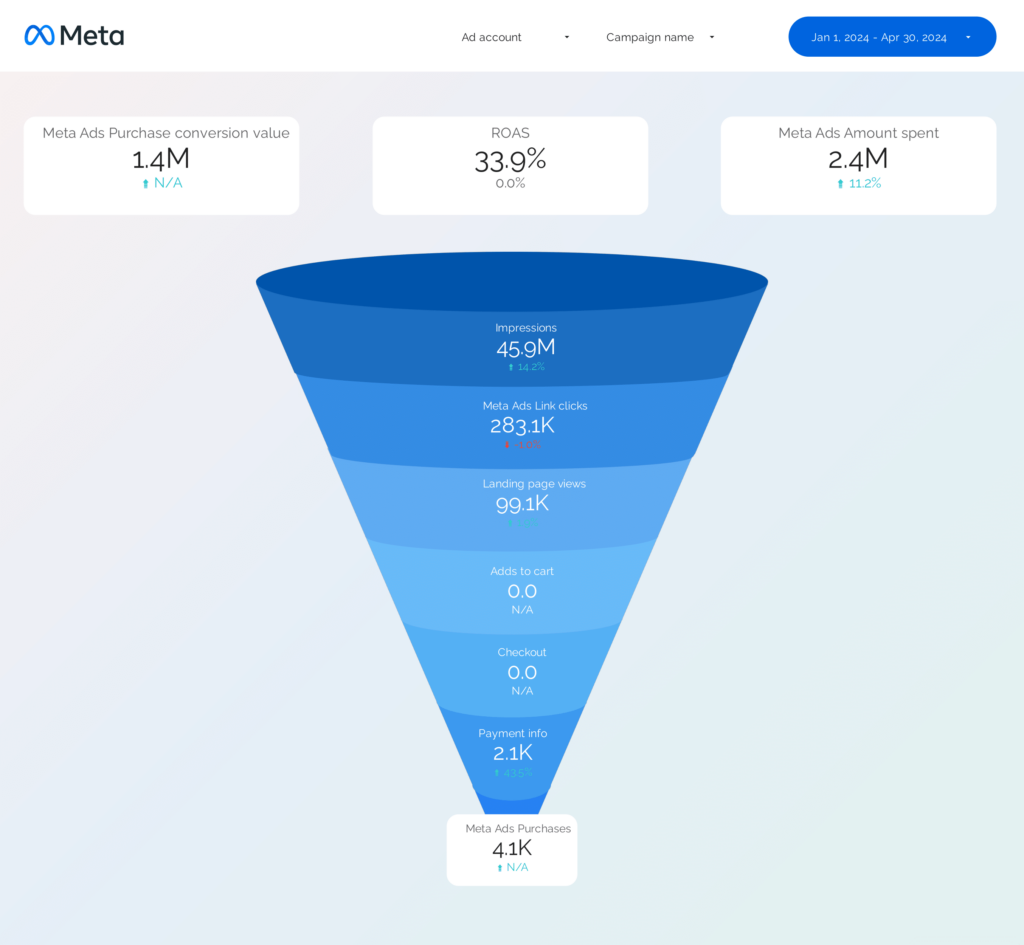A Facebook Ads funnel report should include visibility metrics such as reach and impressions, engagement metrics like likes, comments, and shares, and conversion metrics including click-through rates and conversion rates. Data should be segmented by campaign, channel, audience, content, objective, and date for detailed insights. For example, highlight the performance of a specific campaign targeting a particular audience segment and compare it with other campaigns to identify best practices.
To analyze Facebook Ads funnel data, 1) choose metrics like reach, click-through rate, and conversion rate. Break them down by visibility (impressions, reach), engagement (clicks, likes, shares), and conversion (website visits, purchases). 2) Add context by comparing metrics to cost per click, date range, and goals. Benchmark against industry averages for click-through and conversion rates. 3) Segment data by campaign, audience demographics, and date to identify top-performing content and target audiences. For example, compare engagement rates between different ad objectives or track conversion rates by audience segment.
To build a Facebook Ads funnel dashboard, 1) connect your Facebook Ads account and any other relevant data sources. 2) Select metrics such as click-through rates, conversion rates, and cost per action to monitor performance. 3) Segment your data by campaign, channel, audience, product, customer content, objective, and date to gain a comprehensive understanding. 4) Add filters or buttons for metrics like age, gender, or location to make your report interactive. 5) Share your dashboard via PDF, scheduled emails, or links for easy access and review.
A Facebook Ads funnel dashboard is a visual tool that tracks and analyzes the performance of Facebook ad campaigns, providing insights into customer behavior and conversion rates. It is significant for businesses as it helps optimize marketing strategies, improve customer engagement, and increase ROI. Tools like Looker Studio are commonly used to create these dashboards, which typically include key elements like impressions, click-through rates, conversion rates, and cost per action. Real-time data monitoring is crucial as it allows businesses to make immediate adjustments to their strategies based on current performance. For a comprehensive guide on creating a marketing dashboard using Looker Studio, visit our YouTube channel: https://www.youtube.com/@porter.metrics.
Can I download this template in PDF?


 Impressions
Impressions Ad Spend
Ad Spend